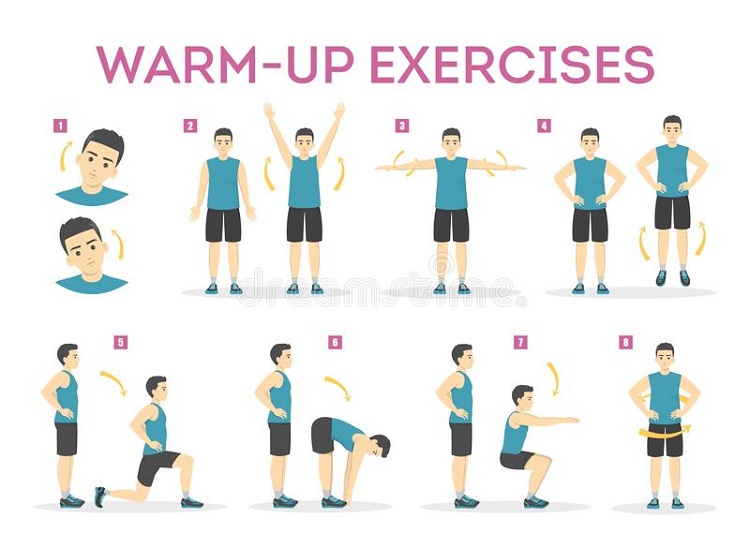
It's important to warm up before a workout and therefore exercises for warm-up are the best way. Sometimes all it takes to get your body ready for what's coming is a few minutes of marching in place and moving your arms. Other times, getting your body ready for activities requires more effort. Many individuals believe that warming up before a game of tennis, pickleball, or golf involves performing a few practice swings with the club or racquet. In actuality, it should consist of five to ten minutes of exercises for warm-up.
The following objectives are achieved through warm-up exercises:
The benefits of exercises for warm-up are numerous and it can't be discussed in a few words, but the most important benefits or why we should need warm-up exercises are given below:
For activities of a moderate intensity
Depending on your activity, you'll require specific kinds of best exercises for warm-up. A few minutes of marching in place is a good warm-up before a strengthening regimen or moderate-intensity activity (such as brisk walking or riding a bike on flat ground). As you march, swing your arms.
A warm-up is vital, and alternate leg movements can fast increase heart rate. Marching also exercises your buttock and leg muscles. The hip flexor is worked by lifting the leg. The quadriceps and gluteal muscles in your thighs and buttocks are worked by your stationary leg.
For more intense exercise
You'll need a more thorough warm-up before engaging in hard physical activity like golf or other energetic sports like tennis or swimming. For instance: "You must swing your arms and turn your trunk to play golf. These motions, together with lateral shuffles, are necessary in tennis and pickleball. Therefore, you should train your muscles for that.
By rehearsing the moves you'll need later, you can warm up. Performing the action frequently in a slow, controlled manner to give the body time to get used to the activity. For instance, to warm up the shoulder and core muscles before playing tennis, stand still and slowly swing your backhand.
Before engaging in intense exercises for warm-up, you should also warm up by marching in place, doing arm sweeps (sweeping your arms overhead), doing torso rotations (rotating your body left, then right), and doing the following exercises.
Stretching after a workout
Workout following the warm-up. Stretching is a good way to wrap up the exercise. Hold each stretch for between 30 and 60 seconds. Ruggeri advises extending the calves, hamstrings, and quadriceps of the upper leg, as well as the shoulders, buttocks, and hip muscles. This will keep your muscles long and flexible so they'll be ready to go the next time you need them for a workout or daily activities.
Exercises for warm-up gradually rev up your cardiovascular system by raising your body temperature and increasing blood flow to your muscles. Warming up may also assist lower injury risk and muscle aches. Warm-up exercises can be passive or energetic, easy or strenuous. 79% of the research that researchers examined claimed that warm-up exercises increased performance.